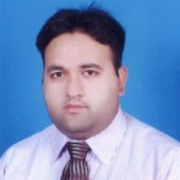

Dell OpenManage Integration for VMware vCenter and Nutanix Prism compete in virtualization management. Nutanix Prism has the upper hand in advanced capabilities due to its robust feature set and perceived value.
Features: Dell OpenManage Integration for VMware vCenter is strong in its integration with VMware environments, enabling seamless management and direct hardware monitoring, enhancing efficiency. Nutanix Prism provides comprehensive infrastructure management with detailed analytics and user-friendly one-click operations, offering broad infrastructure capabilities.
Ease of Deployment and Customer Service: Dell OpenManage Integration offers a simple deployment process in VMware environments and provides responsive customer service. Nutanix Prism features a simplified deployment process across hyper-converged infrastructures with notable support, making it adaptable for diverse infrastructures and providing a broad support scope.
Pricing and ROI: Dell OpenManage Integration presents a lower initial setup cost and demonstrates clear ROI within VMware contexts. Nutanix Prism is costlier but justifies its price with extensive features, potentially leading to higher long-term ROI, making it an attractive option for strategic investments.
| Product | Market Share (%) |
|---|---|
| Nutanix Prism | 13.0% |
| Dell OpenManage Integration for VMware vCenter | 2.9% |
| Other | 84.1% |

| Company Size | Count |
|---|---|
| Small Business | 24 |
| Midsize Enterprise | 14 |
| Large Enterprise | 28 |
Nutanix makes infrastructure invisible, elevating IT to focus on the applications and services that power their business. The Nutanix enterprise cloud platform leverages web-scale engineering and consumer-grade design to natively converge compute, virtualization and storage into a resilient, software-defined solution with rich machine intelligence. The result is predictable performance, cloud-like infrastructure consumption, robust security, and seamless application mobility for a broad range of enterprise applications.
We monitor all Virtualization Management Tools reviews to prevent fraudulent reviews and keep review quality high. We do not post reviews by company employees or direct competitors. We validate each review for authenticity via cross-reference with LinkedIn, and personal follow-up with the reviewer when necessary.